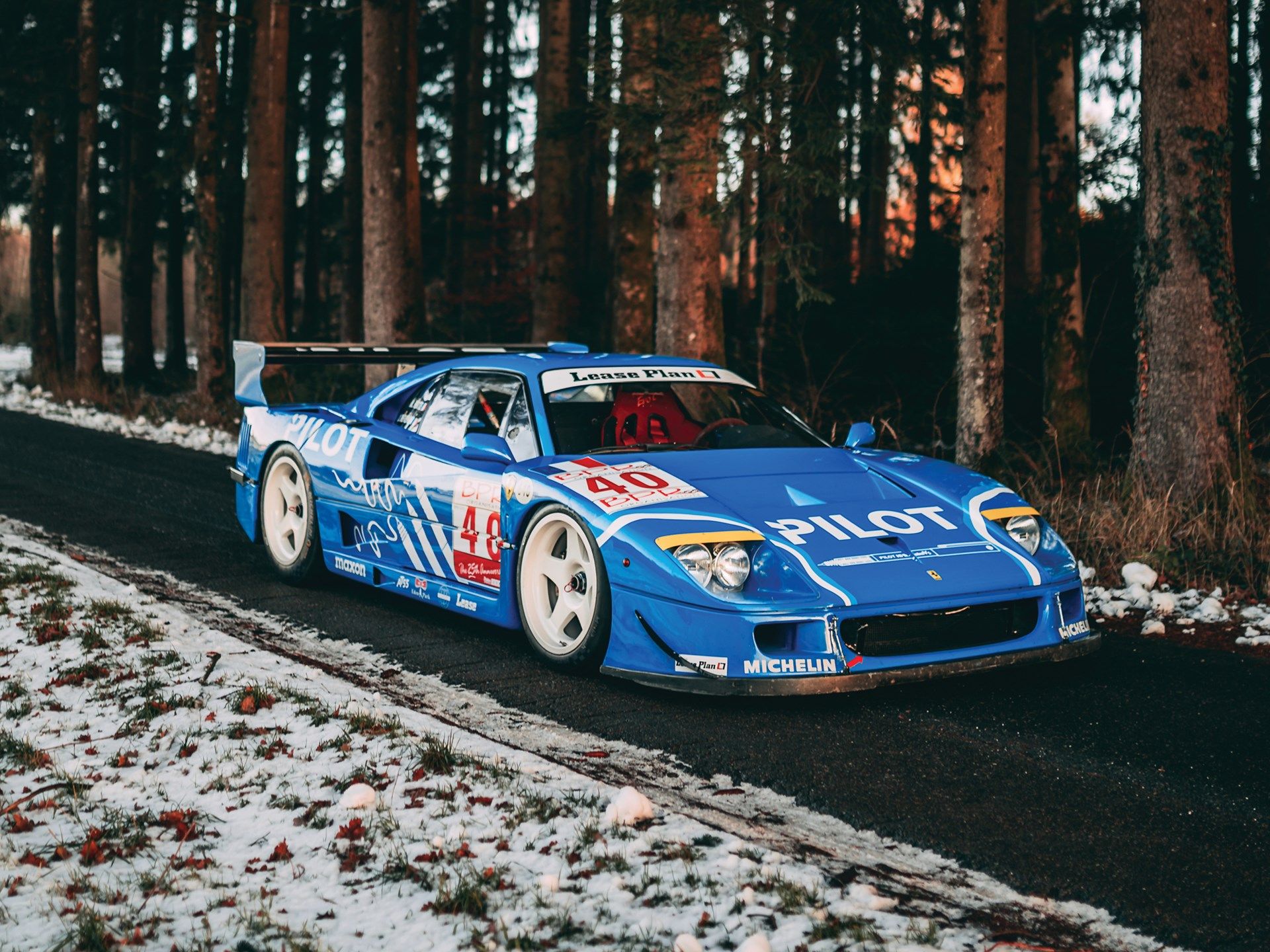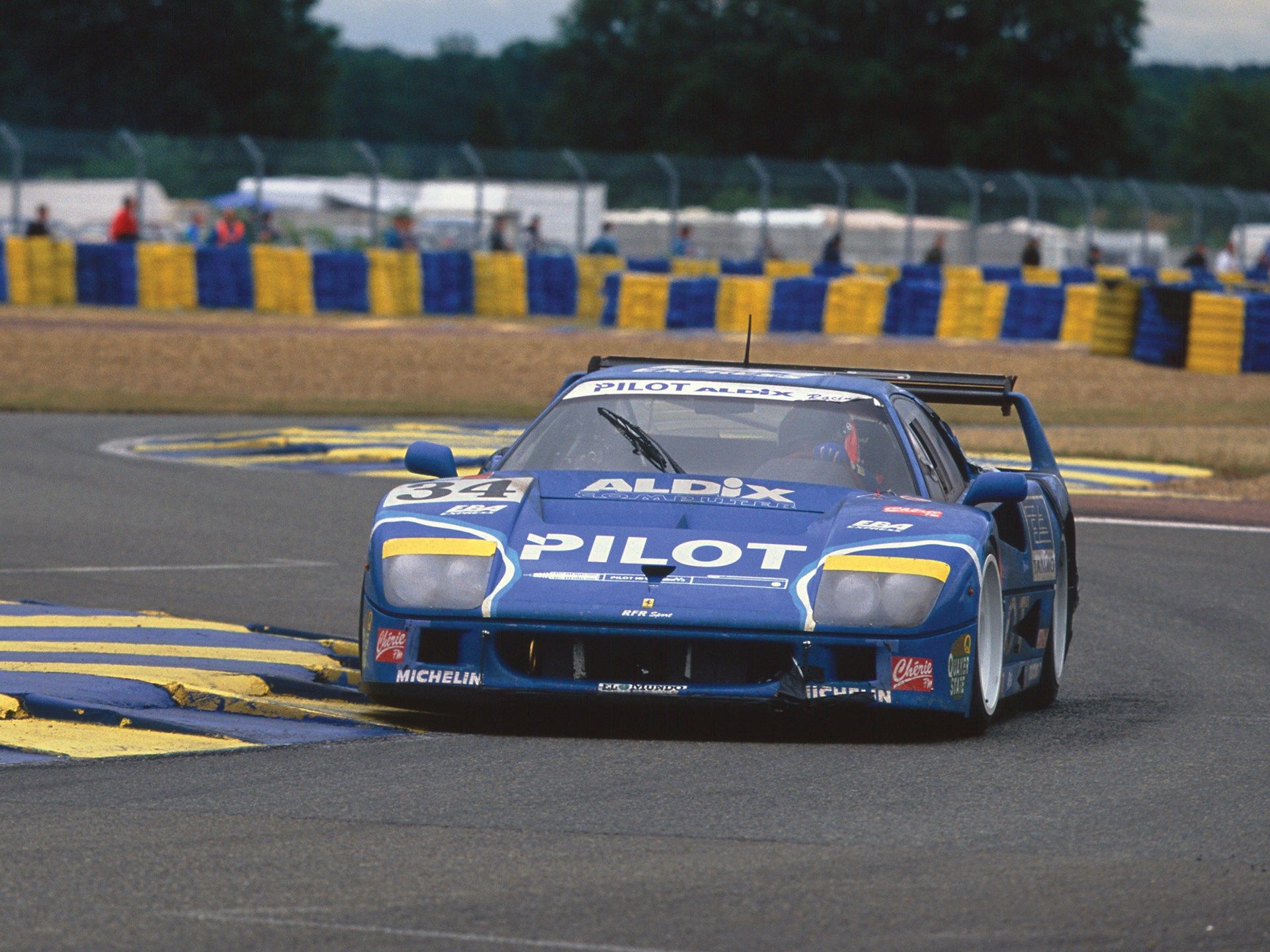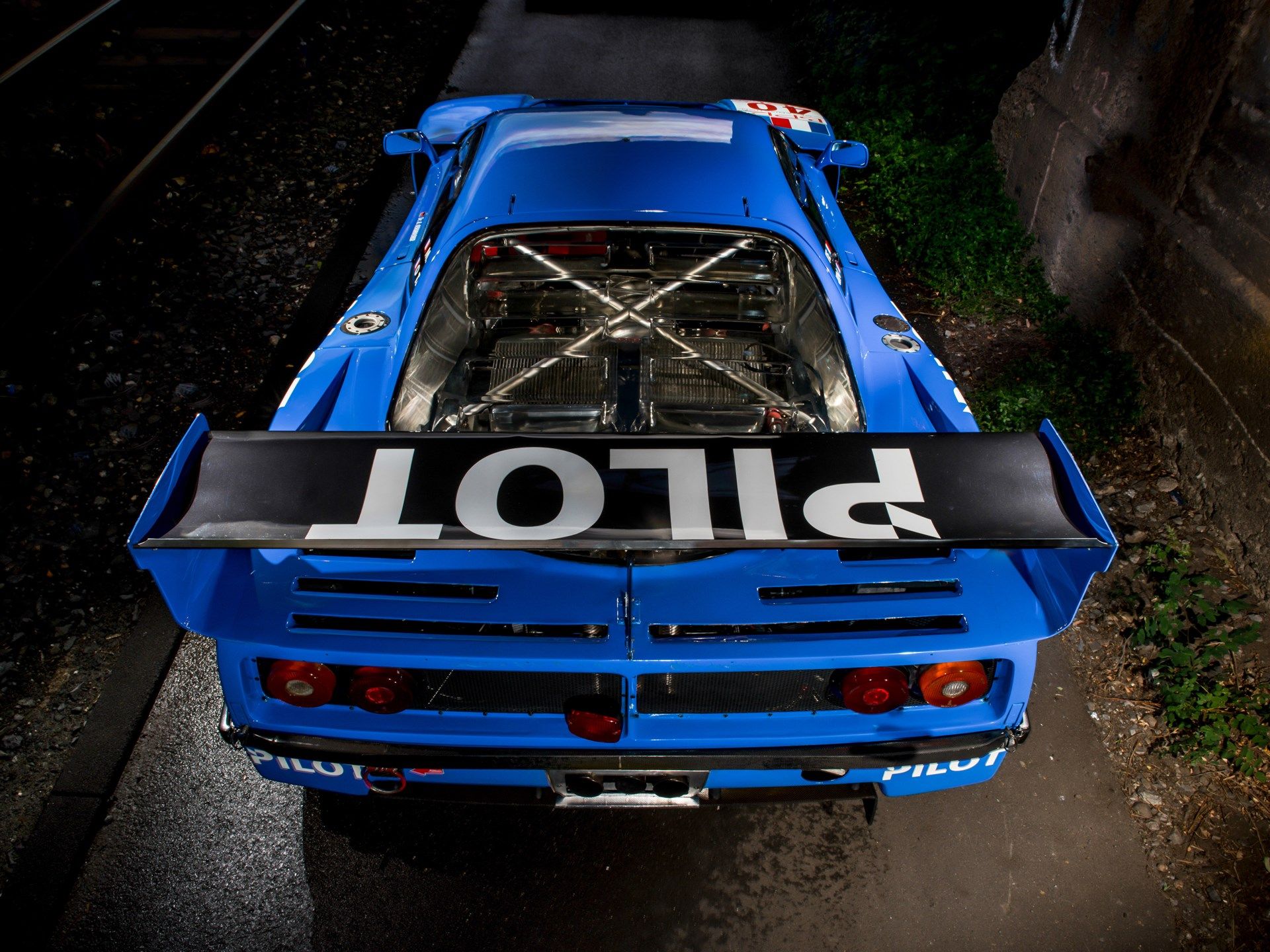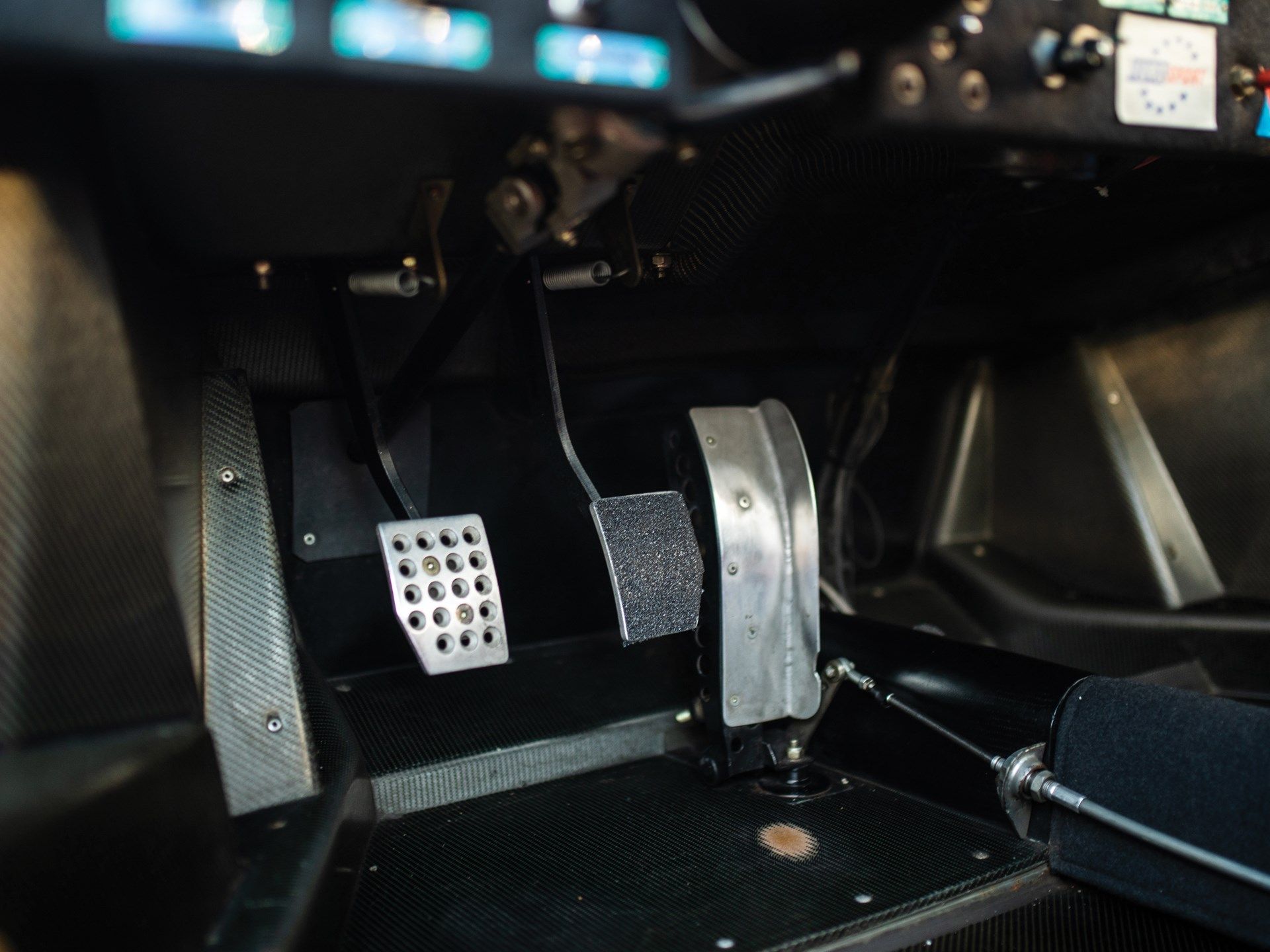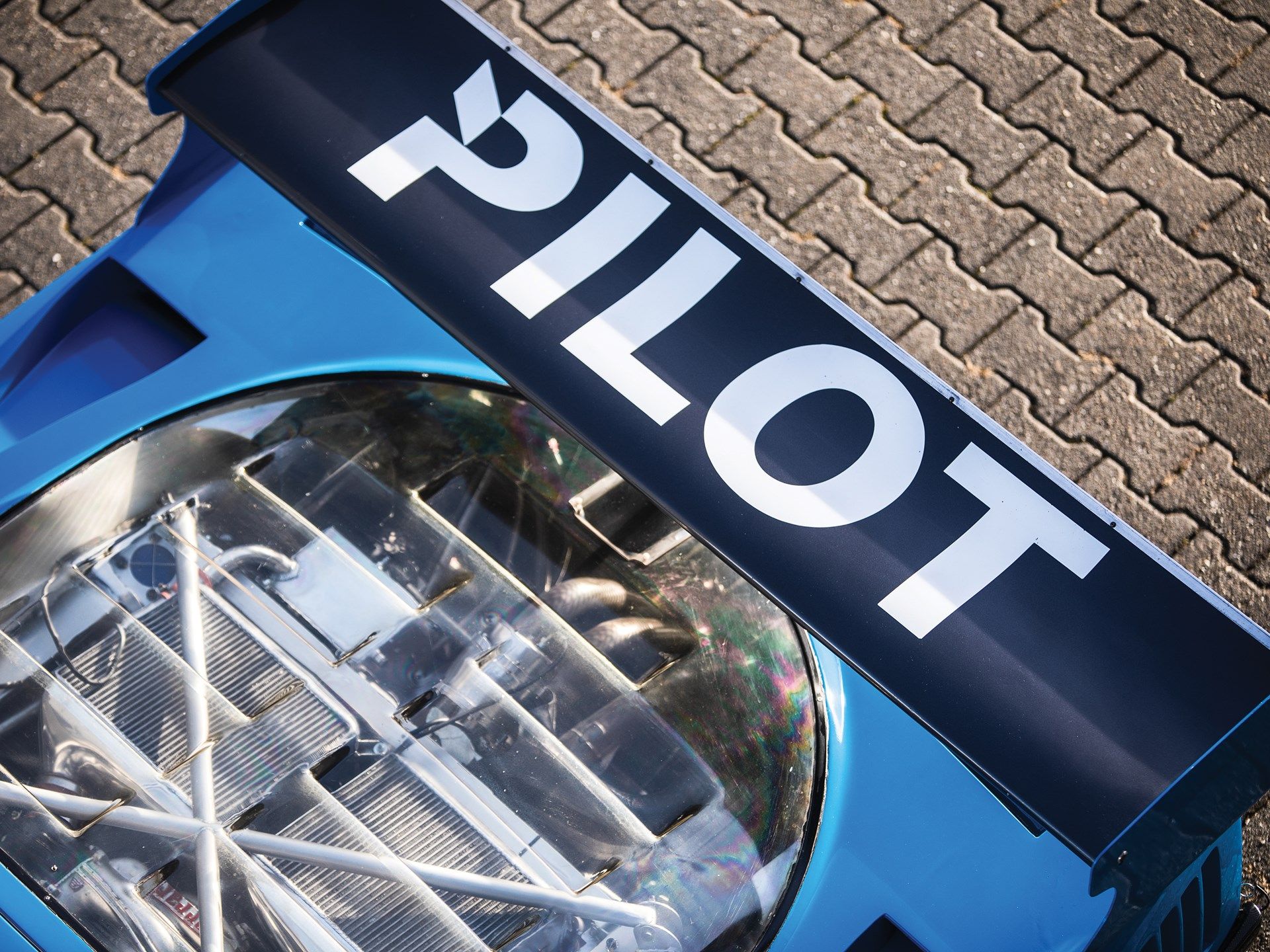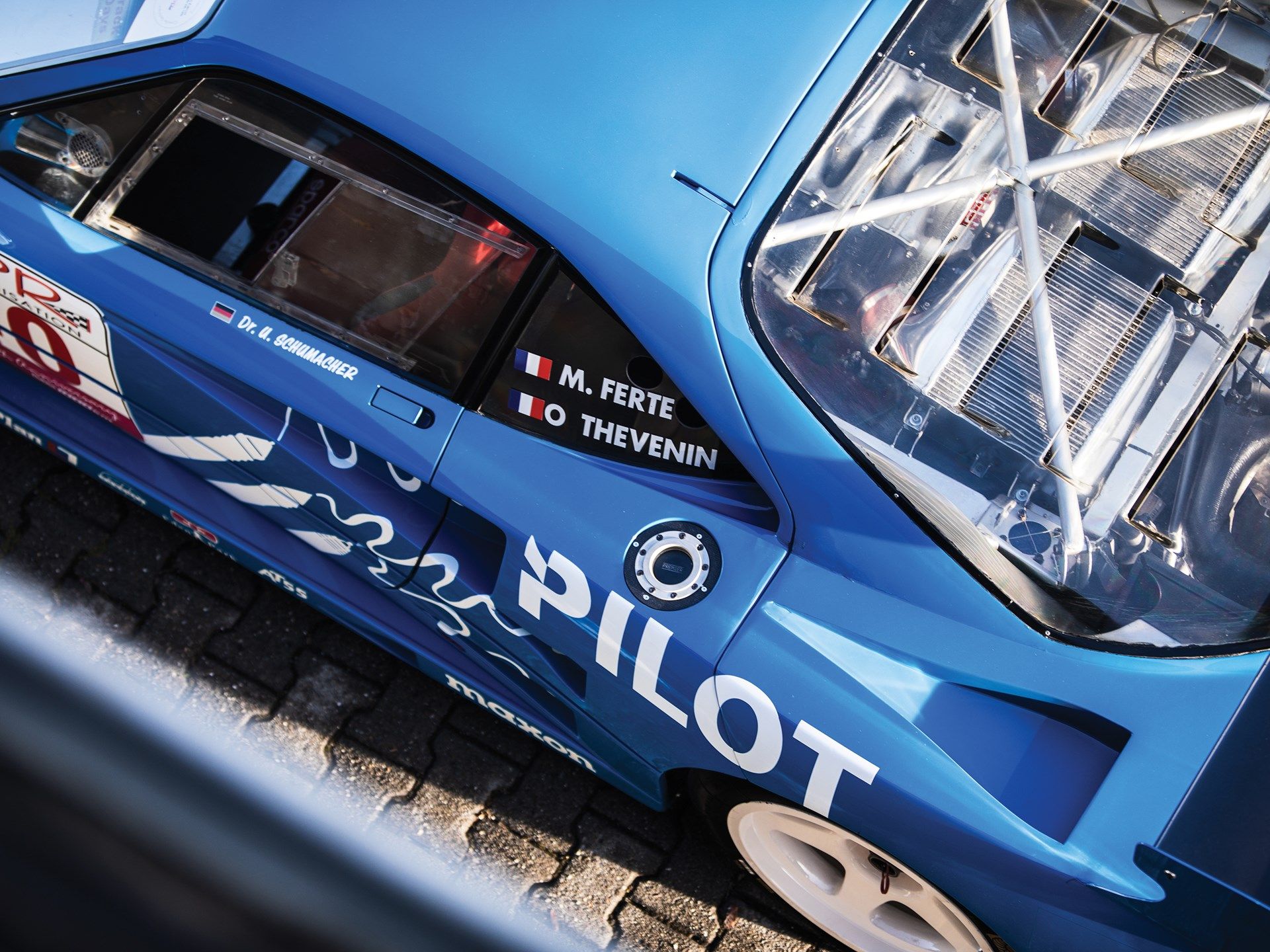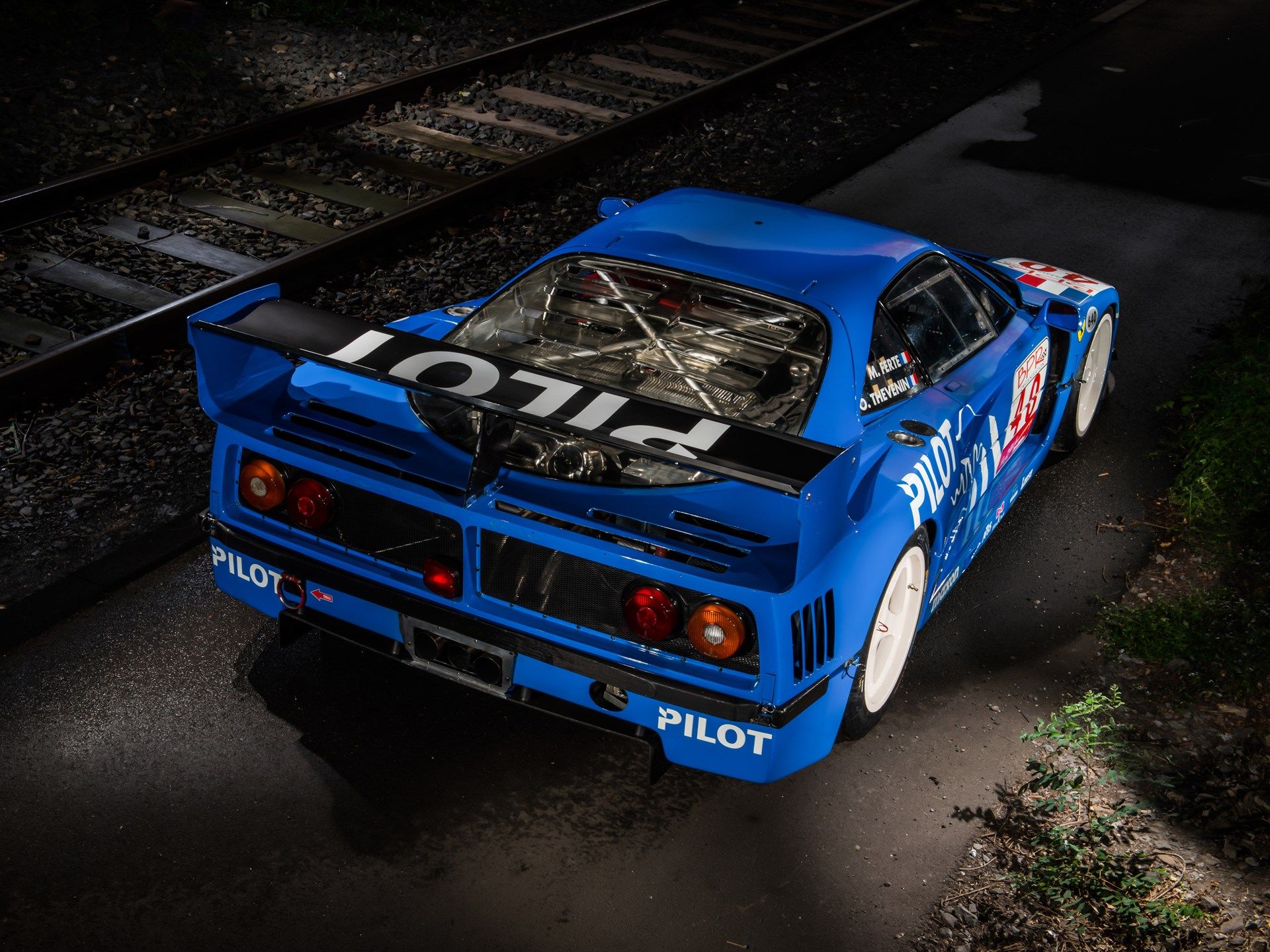By the time its production cycle had ended, in 1992, the F40 was officially the most successful car ever built by Ferrari with over 1,300 units sold in its five-year lifespan. It's now an icon of the Prancing Horse and, while prices tip over $1 million, you can still find one quite easily, although U.S. spec examples are rarer. Still, the street-going F40 has nothing on one of these: the ultra-rare, ultra-insane, F40 LM that was built for that famous old race in France.
Ferrari released the outrageously under-equipped F40 in 1987 to mark the company's 40th anniversary. It was the fastest road-going car at the moment of its debut with a top speed of 201 mph, breaking that much-lamented 200 mph mark, and the last Ferrari to be given the blessing 'The Drake' himself.
With such extreme specs, it wasn't long before the F40 would hit the track, although Ferrari didn't originally intend for it to happen. It first raced Stateside in the IMSA GT series before also competing in the Italian GT Championship and, more prominently, in the BPR Global GT Series of the mid-'90s, by which time the production version was relaxing in retirement for a few years already.
A Ferrari painted in the most French of blues that can be yours if you can afford it
The Ferrari F40 is a car with an aura quite like no other. Although it's no longer the fastest production car in the world and although most respectable sports cars can now reach and far exceed 200 mph, the F40 is still hailed as a thing to behold. It's not only the purposeful looks, either, as most pundits who got behind the wheel of one of these, got out with a grin and with the same story to say: a story of something special, a car built with the sole purpose of being the ultimate driver's car.
That's why Ferrari made it as light as possible at the time, using Kevlar extensively and only covering it with the thinnest of paint layers, so thin you can see the Kevlar weaves underneath.
The result of all those after-hour gatherings was unveiled on July 21st, 1987 and proved to be hugely popular. Initially, some 400 units were slated for production but people kept asking for them and, in the end, 1,311 were built. Soon after, the racing version was built by Michelotto. With bigger twin IHI turbochargers strapped to the 3.0-liter V-8 and an improved injection system co-developed by Weber and Magnetti Marelli, the power went up from the original 471 horsepower to over 700. It all went to the rear tires but, in the case of the LM, the whole thing only weighed 2,290 pounds.
The first racing cars were ready for the 1989 season and Ferrari France, supported by the French Ferrari importer Charles Pozzi which was one of the major backers of a race-going F40 version, planned to debut a pair of them at the German ADAC Supercup round held at Silverstone. However, the two cars that should've been driven by Nicola Larini and Jean-Pierre Jabouille never showed up at the race meeting. As such, the first outing of a racing F40 happened across the Atlantic, in October, at the Laguna Seca IMSA GTO round where Jean Alesi started 3rd and finished runner-up. From then on, Ferrari France, also known as Team 0123 Sport due to its main sponsor, kept campaigning the F40 all through 1990. Then, in 1992, the F40 re-emerged in competition, this time in Europe. Michelotto built a CSAI GT-compliant version that went on to dominate the Italian GT Championship for a few years.
By 1994, the Group C had crashed and burned and three men, Stephane Ratel, Philipp Peter, and Jurgen Barth, got together to revive GT racing in Europe. The result of their work was the BPR Global GT series which debuted that same year and which welcomed an F40 for the first time at the Jarama round. Team Strandell duly started from pole, but Luciano Della Noce and Anders Olofsson were left gutted by the failure of the turbos.
The car you see here, chassis #74045 is one of the first prototypes used during testing. According to RM/Sotheby's, who will offer it for sale at their Paris auction next year, the car ended up in the ownership of Swiss businessman and racer Rene Herzog who sent it over to Michelotto for a full-on LM makeover. By 1995, it had changed hands a few times and was in the ownership of the Pilot-Aldix team which entered it for the full BPR Global GT Series season. It all started at Paul Ricard, in Le Castellet, France, where the car qualified a respectable 6th behind a sleuth of unstoppable McLaren F1s. The team also entered that weekend an F40 GT that proved to be 1.1 seconds slower than the LM version. In the end, the car driven by Olivier Thevenin and Michel Ferte was withdrawn.
The next three rounds were all littered with misfortune: the car qualified well, always on the first two rows of the grid, but never saw the checkered flag due to mechanical issues as well as a rare disqualification for outside assistance. Its first finish came, oddly enough, at the Le Mans 24 Hours in June of 1995. Carlos Palau and the two regulars, Tevenin and Ferte, finished 12th overall and 6th in class respectively, after starting 7th. The F40 LM was wearing by now its blue paint job thanks to the main sponsor, Pilot.
After Le Mans, the Pilot-Aldix team repacked and headed for Sweden. At the twisty Anderstorp, Ferte was on pole and, in the race, proved untouchable and won with Thevenin by his side. Four more races were scheduled in 1995. The car did not finish in the Asian rounds at Suzuka and Zhuhai, didn't start at Nogaro and managed a heroic recovery from 31st on the grid to finish 2nd overall at a wet Silverstone behind the Mach One Racing Harrods-sponsored McLaren.
The 1996 season started poorly as well with retirement at Paul Ricard followed by a no-show at Monza. But, on its return, at Jarama, the F40 finished a creditable fifth overall, only beaten by a few McLaren F1s and one of the quicker F40 GTE examples entered by Ennea. The Ennea GTE-spec cars proved to be quicker throughout the year compared to the Pilot-Aldix LM model which is why, before the Silverstone round in May, the Aldix mechanics swapped the LM wing with the GTE one.
After 1996, the FIA GT Championship replaced the BPR GT Series and with the switch came a new wave of stronger and faster GT1 cars that far exceeded the possibilities of the old ones that fell in the GT2 class right away - exactly what happened to the Viper, for instance. Ferrari developed the F50 GT1 for the 1996 rules, but delays found the car obsolete in the eve of the 1997 season so the whole thing was canned and the car never raced, leaving the F40 as the last GT1 Ferrari until the Ferrari 550 GTS appeared for a whole new set of rules in 2000.
As such, the ex-Pilot-Aldix car was sold a few times and is now being sold by the same owner who's had it for a decade. It looks exactly as it did back in 1996 at Nogaro and, judging by the prices for racing F40s nowadays; it could fetch at least $2-3 million. That's also because now there are places where a new customer can actually enjoy this car. Ferrari set up the Club GT Competizioni, and there are also series such as the Endurance Race Legends championship and the Global Endurance Legends, all of which welcome '90s GT cars. It's clearly one of the most eagerly-anticipated cars to hit the auction block next year, the perfect belated Christmas gift if you ask me!
Further reading
Read our full review on the 1989-1994 Ferrari F40 LM
Read our full review on the 1987-1992 Ferrari F40.
Read our full review on the 1989 Ferrari F40 LM Barchetta.

